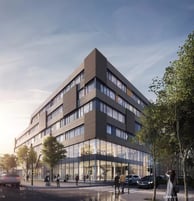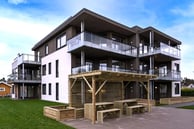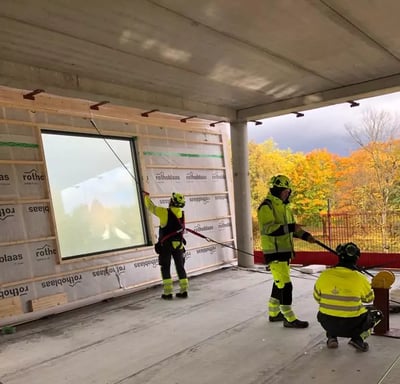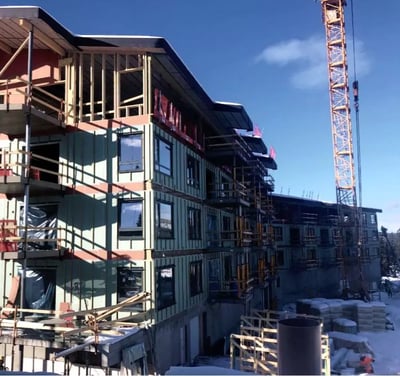FIT PRODUCT
Prefabricated timber wall panels
Timber infill panels are used for exterior walls in concrete and steel structures. They provide flexibility of design, including floor layout, fire safety, sound insulation, and renovation. Wood infill walls are non-structural, lightweight, and are suitable for a range of exterior and interior finishing. Timber infill walls are approved for up to eighteen storey buildings.
Infill walls are fixed between framing members or attached to the outside of the main frame. Prefabricated timber wall panels are designed to meet the fire and sound requirements. Infill panels are not considered to be load bearing, although they are required to resist wind loads applied to the facade, as well as supporting their own weight.


MORE ADVANTAGES
Benefits of prefab timber walls
Prefabricated timber wall panels are becoming increasingly popular in the construction industry, offering a number of benefits over traditional stick-built walls.
Outstanding thermal properties and energy conservation
Shorter on-site construction time reached by prefabrication
Reduced wall thickness maximizes usable living space
Reduced load on foundation
Improved seismic performance


ESTABLISHED COMPANY
Gokstad Hus
Gokstad Hus has proved outstanding knowledge and experience in large scale projects. Our prefabricated timber walls has successfully finished several multi storey buildings.
CERTIFIED PRODUCT
Approved quality






















FINISHED PROJECTS
Solid experience
Take a look at some of our finished projects or see more in gallery. Clients express the best feedback about timber infill panels made by Gokstad Hus.
AND MORE
Additional bonuses
Prefabricated timber wall panels offer way more benefits than any other similar construction method for infill walls.










